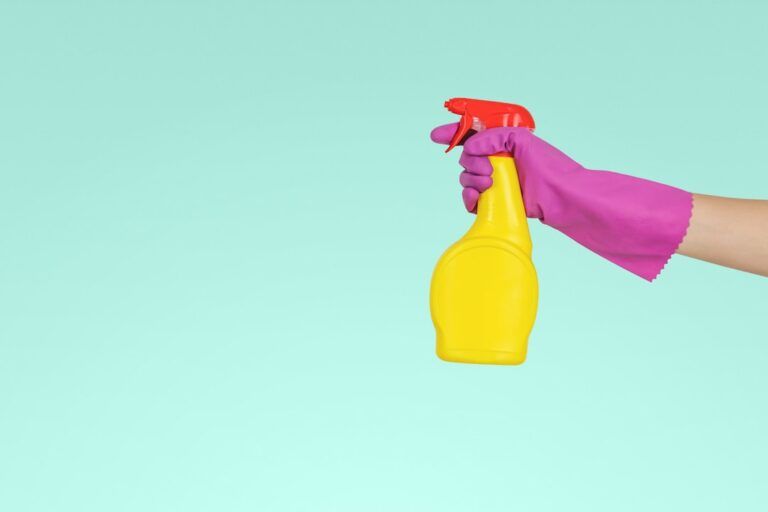A thermos, also known as a vacuum flask, is a container that is designed to keep the temperature of its contents constant for an extended period of time. It consists of two walls with a vacuum in between, which helps to minimize heat transfer. The inner wall is usually made of glass or stainless steel, while the outer wall is made of plastic or metal. The lid of the thermos is typically a screw-on cap that provides a tight seal.
Thermoses have a wide range of uses and are commonly used to keep beverages hot or cold. They are often used for storing and transporting hot coffee, tea, soup, or cold water, juice, or sports drinks. Thermoses are also popular among outdoor enthusiasts who need to keep their food and drinks at the desired temperature while on the go. Additionally, thermoses can be used to store and transport baby formula, milk, or other liquids.
There are several benefits to using a thermos. Firstly, it allows you to enjoy your favorite hot or cold beverages at any time and in any place. Whether you’re at work, school, or on a hike, a thermos can keep your drink at the perfect temperature for hours. Secondly, using a thermos can help you save money by reducing the need to buy expensive drinks from coffee shops or convenience stores. Lastly, using a thermos is environmentally friendly as it reduces the use of disposable cups and bottles.
Key Takeaways
- Thermoses are useful for keeping hot or cold beverages at the desired temperature for extended periods of time.
- When choosing a thermos, consider factors such as insulation, capacity, durability, and ease of use and cleaning.
- There are various types of thermoses available in the market, including vacuum-insulated, glass-lined, and stainless steel.
- Insulation technologies used in thermoses include vacuum insulation, foam insulation, and double-walled construction.
- Thermoses come in different sizes and capacities, ranging from small personal sizes to large ones for groups.
Factors to Consider When Choosing a Thermos
When choosing a thermos, there are several factors that you should consider to ensure that you find one that meets your needs and preferences.
1. Purpose of use: Consider how you plan to use the thermos. Will you be using it primarily for hot beverages or cold beverages? Will you be using it for food storage? This will help you determine the size and insulation technology that is most suitable for your needs.
2. Material of construction: Thermoses are typically made of glass, stainless steel, plastic, or ceramic. Each material has its own advantages and disadvantages. Glass thermoses are durable and do not retain flavors or odors, but they are more fragile and can break if dropped. Stainless steel thermoses are durable, lightweight, and easy to clean, but they can retain flavors and odors. Plastic thermoses are lightweight and affordable, but they may not be as durable or effective at maintaining temperature. Ceramic thermoses are aesthetically pleasing and do not retain flavors or odors, but they are fragile and can break if mishandled.
3. Insulation technology: The insulation technology used in a thermos determines its ability to maintain temperature. Vacuum insulation is the most effective as it creates a vacuum between the inner and outer walls, which minimizes heat transfer. Foam insulation is also effective as it traps air between the walls, providing insulation. Air insulation is less effective as it relies on the air between the walls to provide insulation. Glass insulation is the least effective as glass is a poor insulator.
4. Capacity and size: Consider how much liquid or food you need to store in the thermos. Thermoses come in a range of sizes, from small ones that hold a single serving to large ones that hold multiple servings. Additionally, consider the size of the thermos in relation to your needs. If you plan to carry it in a bag or backpack, make sure it will fit comfortably.
5. Durability: Look for a thermos that is durable and built to last. Stainless steel thermoses are known for their durability and resistance to dents and scratches. Glass-lined thermoses are also durable but can be more fragile. Plastic thermoses may not be as durable but can be lightweight and affordable.
6. Ease of use and cleaning: Consider how easy the thermos is to use and clean. Look for a thermos with a wide mouth that makes it easy to fill and pour. Screw-on lids provide a tight seal and are less likely to leak. Additionally, look for thermoses that are dishwasher safe or easy to clean by hand.
7. Additional features and accessories: Some thermoses come with built-in cups, straws, carrying handles, shoulder straps, or temperature gauges. These additional features can enhance the usability and convenience of the thermos.
8. Budget: Consider your budget when choosing a thermos. Thermoses can range in price from affordable options to high-end models. Determine how much you are willing to spend and look for a thermos that offers good value for money.
Types of Thermoses Available in the Market
There are several types of thermoses available in the market, each with its own advantages and disadvantages.
1. Vacuum flask: Vacuum flasks are the most common type of thermos and are known for their excellent insulation properties. They consist of two walls with a vacuum in between, which minimizes heat transfer. The inner wall is usually made of glass or stainless steel, while the outer wall is made of plastic or metal.
2. Glass-lined thermos: Glass-lined thermoses have an inner wall made of glass, which provides excellent insulation and does not retain flavors or odors. However, glass-lined thermoses can be more fragile and prone to breakage if mishandled.
3. Stainless steel thermos: Stainless steel thermoses are durable, lightweight, and easy to clean. They are resistant to dents and scratches and can retain temperature for long periods of time. However, stainless steel thermoses can retain flavors and odors.
4. Plastic thermos: Plastic thermoses are lightweight and affordable. They are often used for storing cold beverages but may not be as effective at maintaining temperature as other types of thermoses. Additionally, plastic thermoses may not be as durable as glass or stainless steel thermoses.
5. Ceramic thermos: Ceramic thermoses are aesthetically pleasing and do not retain flavors or odors. However, they are fragile and can break if mishandled.
Insulation Technologies Used in Thermoses
The insulation technology used in a thermos determines its ability to maintain temperature. There are several insulation technologies used in thermoses, each with its own advantages and disadvantages.
1. Vacuum insulation: Vacuum insulation is the most effective insulation technology used in thermoses. It involves creating a vacuum between the inner and outer walls of the thermos, which minimizes heat transfer. Vacuum-insulated thermoses can keep beverages hot or cold for extended periods of time.
2. Foam insulation: Foam insulation involves trapping air between the inner and outer walls of the thermos, providing insulation. Foam-insulated thermoses are effective at maintaining temperature but may not be as effective as vacuum-insulated thermoses.
3. Air insulation: Air insulation relies on the air between the inner and outer walls of the thermos to provide insulation. Air-insulated thermoses are less effective at maintaining temperature than vacuum-insulated or foam-insulated thermoses.
4. Glass insulation: Glass insulation is the least effective insulation technology used in thermoses. It involves using glass as the inner wall of the thermos, which is a poor insulator. Glass-insulated thermoses may not be as effective at maintaining temperature as other types of thermoses.
Capacity and Size of Thermoses
Thermoses come in a range of sizes to accommodate different needs and preferences.
1. Small thermoses: Small thermoses typically hold around 8 to 12 ounces of liquid and are suitable for single servings or small portions of food. They are compact and easy to carry, making them ideal for individuals who are on the go.
2. Medium thermoses: Medium thermoses typically hold around 16 to 24 ounces of liquid and are suitable for multiple servings or larger portions of food. They are versatile and can be used for both individual use and sharing.
3. Large thermoses: Large thermoses typically hold around 32 to 48 ounces of liquid and are suitable for sharing or storing larger quantities of food. They are ideal for outdoor activities, picnics, or family outings.
4. Extra-large thermoses: Extra-large thermoses typically hold more than 48 ounces of liquid and are suitable for storing large quantities of food or beverages. They are often used for catering, parties, or events where a large amount of food or drinks need to be kept at the desired temperature.
Durability and Material of Construction

The durability and material of construction of a thermos play a crucial role in its performance and longevity.
1. Stainless steel thermoses: Stainless steel thermoses are known for their durability and resistance to dents and scratches. They can withstand rough handling and are less likely to break if dropped. Stainless steel thermoses are also easy to clean and maintain. However, stainless steel thermoses can retain flavors and odors, so it is important to clean them thoroughly after each use.
2. Glass-lined thermoses: Glass-lined thermoses have an inner wall made of glass, which provides excellent insulation and does not retain flavors or odors. However, glass-lined thermoses can be more fragile and prone to breakage if mishandled. It is important to handle them with care to avoid accidents.
3. Plastic thermoses: Plastic thermoses are lightweight and affordable. They are often used for storing cold beverages but may not be as effective at maintaining temperature as other types of thermoses. Additionally, plastic thermoses may not be as durable as glass or stainless steel thermoses and can be prone to cracking or breaking if mishandled.
4. Ceramic thermoses: Ceramic thermoses are aesthetically pleasing and do not retain flavors or odors. However, they are fragile and can break if mishandled. Ceramic thermoses are best suited for indoor use or for individuals who can handle them with care.
Ease of Use and Cleaning of Thermoses
The ease of use and cleaning of a thermos can greatly impact its usability and convenience.
1. Wide mouth thermoses: Thermoses with a wide mouth are easier to fill and pour. They allow for easy access to the contents of the thermos and make it easier to clean. Wide mouth thermoses are ideal for individuals who need to fill or pour liquids quickly and easily.
2. Screw-on lids: Thermoses with screw-on lids provide a tight seal and are less likely to leak. They help to maintain the temperature of the contents and prevent spills or accidents. Screw-on lids are ideal for individuals who need to transport their thermos without worrying about leaks or spills.
3. Dishwasher safe thermoses: Some thermoses are dishwasher safe, which makes them easy to clean and maintain. Simply place them in the dishwasher after use, and they will be clean and ready to use again. Dishwasher safe thermoses are ideal for individuals who prefer the convenience of using a dishwasher.
4. Easy to clean thermoses: Look for thermoses that are easy to clean by hand. Some thermoses have removable parts or come with cleaning brushes that make it easier to reach all areas of the thermos. Easy to clean thermoses are ideal for individuals who prefer to clean their thermos by hand.
Additional Features and Accessories of Thermoses
Some thermoses come with additional features and accessories that enhance their usability and convenience.
1. Built-in cups: Some thermoses have built-in cups or mugs, which eliminate the need to carry an additional cup or mug. Built-in cups are convenient and make it easy to enjoy your beverage on the go.
2. Straws: Thermoses with built-in straws make it easy to drink without having to remove the lid. Straws are ideal for individuals who prefer to drink their beverages without having to tilt the thermos.
3. Carrying handles: Thermoses with carrying handles make it easy to transport them from one place to another. Carrying handles are ideal for individuals who need to carry their thermos for long periods of time or who have limited hand mobility.
4. Shoulder straps: Some thermoses come with shoulder straps, which allow for hands-free carrying. Shoulder straps are ideal for individuals who need to carry their thermos while hiking, biking, or engaging in other outdoor activities.
5. Temperature gauges: Some thermoses have built-in temperature gauges that allow you to monitor the temperature of the contents. Temperature gauges are ideal for individuals who need to ensure that their beverages or food are at the desired temperature.
Budget Considerations When Buying a Thermos
When buying a thermos, it is important to consider your budget and find a thermos that offers good value for money.
1. Price range of thermoses: Thermoses can range in price from affordable options to high-end models. The price of a thermos is often determined by its size, material of construction, insulation technology, and additional features. Set a budget and look for a thermos that fits within your price range.
2. Value for money: Consider the features and performance of the thermos in relation to its price. Look for a thermos that offers good value for money and meets your needs and preferences.
3. Long-term savings: Investing in a high-quality thermos may initially cost more but can save you money in the long run. By using a thermos instead of buying drinks from coffee shops or convenience stores, you can save money on a daily basis. Additionally, a durable thermos can last for many years, reducing the need for frequent replacements.
Top Brands and Models of Thermoses in the Market
There are several top brands and models of thermoses available in the market, each offering their own unique features and benefits.
1. Yeti Rambler: Yeti is a well-known brand that offers high-quality thermoses. The Yeti Rambler is a popular choice among outdoor enthusiasts due to its durability and excellent insulation properties. It is available in various sizes and colors to suit different needs and preferences.
2. Stanley Classic Vacuum Bottle: Stanley is another reputable brand that is known for its durable and reliable thermoses. The Stanley Classic Vacuum Bottle is a classic design that has been trusted by outdoor enthusiasts for decades. It features a wide mouth for easy filling and pouring and comes with a lifetime warranty.
3. Thermos Stainless King: Thermos is a leading brand in the thermos industry and offers a wide range of high-quality products. The Thermos Stainless King is a popular choice due to its sleek design, excellent insulation properties, and durable construction. It comes with a built-in cup and is available in various sizes and colors.
4. Zojirushi Stainless Steel Mug: Zojirushi is a Japanese brand that is known for its innovative and high-quality thermoses. The Zojirushi Stainless Steel Mug is a top-rated thermos that features vacuum insulation technology, a leak-proof lid, and a convenient flip-open design. It is made of durable stainless steel, which helps to keep beverages hot or cold for hours. The vacuum insulation technology ensures that the temperature of the drink is maintained, while the leak-proof lid prevents any spills or leaks. The convenient flip-open design allows for easy drinking on the go, making it perfect for commuters or outdoor enthusiasts. Overall, the Zojirushi Stainless Steel Mug is a reliable and stylish choice for anyone in need of a high-quality thermos.
If you’re in the market for a new thermos, you’ll definitely want to check out this comprehensive Thermos Buying Guide. It covers everything you need to know about choosing the perfect thermos for your needs. And if you’re specifically interested in the benefits of using a vacuum insulated thermos for your coffee, be sure to read this informative article. It explains why vacuum insulation is so important for keeping your coffee hot and delicious for hours. Don’t forget to also take a look at their Top 7 Factors to Consider When Purchasing a Large Coffee Thermos article, which provides valuable insights into what to look for when buying a larger capacity thermos. Happy shopping!
FAQs
What is a thermos?
A thermos is a container designed to keep hot liquids hot and cold liquids cold for an extended period.
What are the different types of thermoses?
There are two main types of thermoses: glass-lined and stainless steel. Glass-lined thermoses are more fragile but offer better insulation, while stainless steel thermoses are more durable but may not keep liquids as hot or cold for as long.
What should I consider when buying a thermos?
When buying a thermos, consider the size, insulation, durability, ease of cleaning, and whether it is leak-proof or not.
What is the best size for a thermos?
The best size for a thermos depends on your needs. If you want to keep a small amount of coffee or tea hot for a few hours, a 12-ounce thermos may be sufficient. If you want to keep a large amount of soup or stew hot for a whole day, a 32-ounce thermos may be more appropriate.
How long can a thermos keep liquids hot or cold?
The length of time a thermos can keep liquids hot or cold depends on the quality of insulation and the size of the thermos. Generally, a good thermos can keep liquids hot or cold for 12-24 hours.
How do I clean a thermos?
To clean a thermos, fill it with hot water and a few drops of dish soap, then let it sit for a few minutes. Scrub the inside with a bottle brush, then rinse thoroughly with hot water.
Can I put a thermos in the dishwasher?
It is not recommended to put a thermos in the dishwasher, as the high heat and harsh detergents can damage the insulation and seal. Instead, hand wash the thermos with hot water and dish soap.






